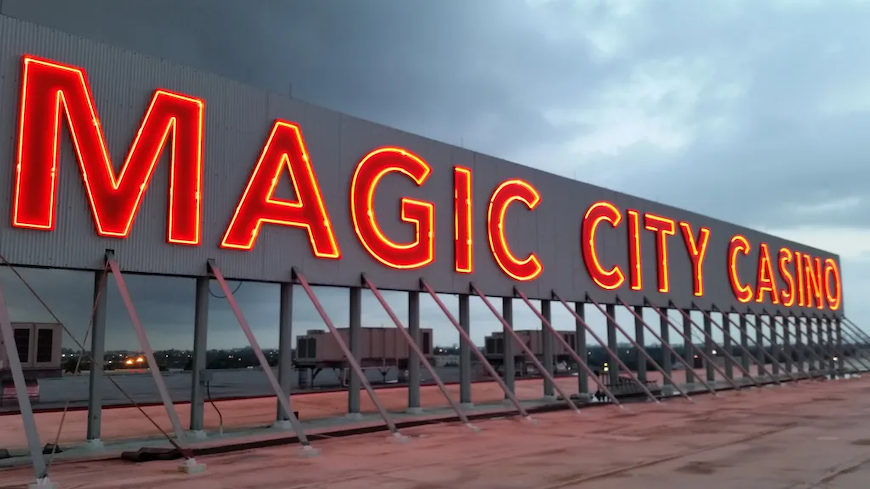
When people think of the Sunshine State, they do not instantly think of gambling but rather of sunny weather, theme parks, the Everglades National Park, and areas like St. Augustine. Yet, the only US state that borders the Atlantic Ocean and the Gulf of Mexico is home to some of the country’s biggest gaming venues. Its Seminole-run Hard Rock casinos are massive and substantial attractions for tourists and locals, with the one in Tampa ranking as the sixth-largest in the world by floor space.
While tribal gaming venues in Florida get all the press, the state also has eight commercial casinos in Broward and Miami-Dade counties, on account of voters in these territories allowing such locales to exist here through referendums in 2005 and 2008, respectively. These were previously banned under Florida gambling law. Well, business for these establishments has not been booming as of late. The Florida State Gaming Control Commission released its slot revenues report in late May, which detailed that interest in reel-spinning games in this slice of the US is a tad down, as in April, slot machines pulled in $59 million in revenues, compared to last year’s $59.6 million.
Something unusual in this record review of note was that Miami’s Magic City Casino did better than expected, raking in 7.6% higher slot revenues in April than last year. It and Gulfstream Park, which showed a 2.9% revenue jump, were the only two non-tribal spots in the state not to note a dip in slot intake. Hialeah Park Casino, Casino Miami, Calder Casino, Harrah’s Pompano Beach Casino, Big Easy Casino, and the Casino at Dania Beach all posted revenue falls ranging from 7.5% to 0.1%. Here, we try to uncover why enthusiasm for slot gaming in Miami is maintaining and growing.
Miami’s Casinos Shine
Statewide slot revenues have remained flat in Florida recently, but that does not apply to Miami-Dade County, which has been posting steady gains. Magic City Casino, Hialeah Park Casino, and Casino Miami generated $11.9 million, $7.9 million, and $7 million in January 2025, a month where commercial venues in Florida showed a 1.6% boost overall.
Aside from Magic City’s strong performance in April, the noted 7.6%, it also posted a 7% year-on-year jump in March, when its revenues were $13 million, compared to the $12.1 million it generated the same month the previous year. Other commercial Florida casinos posted modest improvements, but not to the level of Magic City’s.
Magic City’s Appeal

According to industry experts, this venue’s success hinges chiefly on its unique market. Miami-Dade County, with a population of 2.7 million, offers a dense customer base, unlike Broward’s more suburban markets.
The county has a tourism hub status, drawing around twenty-eight million visitors annually, generating $22.0 billion. Naturally, all these people flocking to this part of the state do loads to fuel casino traffic, especially during peak winter.
The Florida Gaming Control Commission data shows that Miami-Dade venues consistently outperform Broward counterparts in per-machine revenue. Moreover, it must be stated that cultural factors are in play here, as Miami’s large Hispanic population has a strong affinity for gambling, viewing it as an acceptable social activity.
Recent renovations to Magic City, including a new high-limit slot area and VIP lounges, have also done their part to boost curiosity about it. The same can be said for it hosting various events like music festivals, which not only create a vibrant atmosphere that entices many but also bring diverse crowds who would not have thought to engage in slot play if not for already being on Magic City’s premises for other types of entertainment. Proximity to nightlife hubs like Wynwood and South Beach has also helped this spot get people through its doors.
Florida’s Commercial vs. Tribal Sectors
Tribal gaming in the US became a thing in 1988 through the Indian Gaming Regulatory Act, which the US Congress enacted that year. That federal law laid out a framework that governs Native American gaming in the United States and authorized Class II gaming at locales run by Native Tribes.
The Seminole Tribe of Florida launched the Seminole Classic Casino, then known as the Seminole Casino Hollywood, in 1979 as a bingo hall. Four years later, after the passing of the Indian Gaming Regulatory Act, it started offering Class II gaming machines and is today one of six tribal casino gambling establishments in the state.
Regarding non-tribal gaming, the previously mentioned voter-approved amendments allowed slots in Broward and Miami-Dade counties. The casinos in this area have seen revenue growth slow to a near standstill overall in the past few years, with many claiming that weak player engagement is due to market saturation. The state’s eight non-tribal casinos operate close to seven thousand slot machines. In contrast, the Native ones house more than fourteen thousand electronic games, on top of around five hundred live table games, meaning classics like blackjack and roulette.
Economic pressures such as inflation have affected non-tribal casinos in this slice of America, forcing Florida’s residents to tighten discretionary spending.


